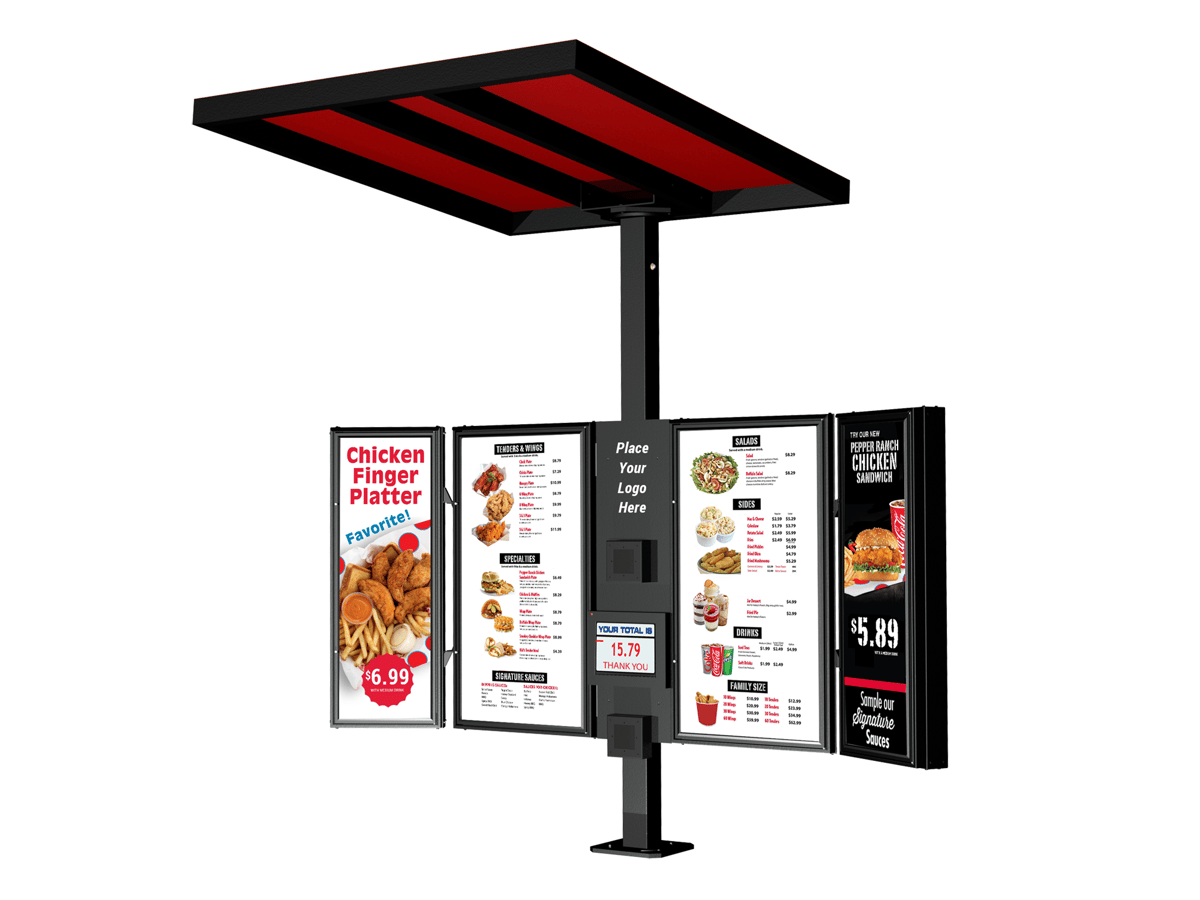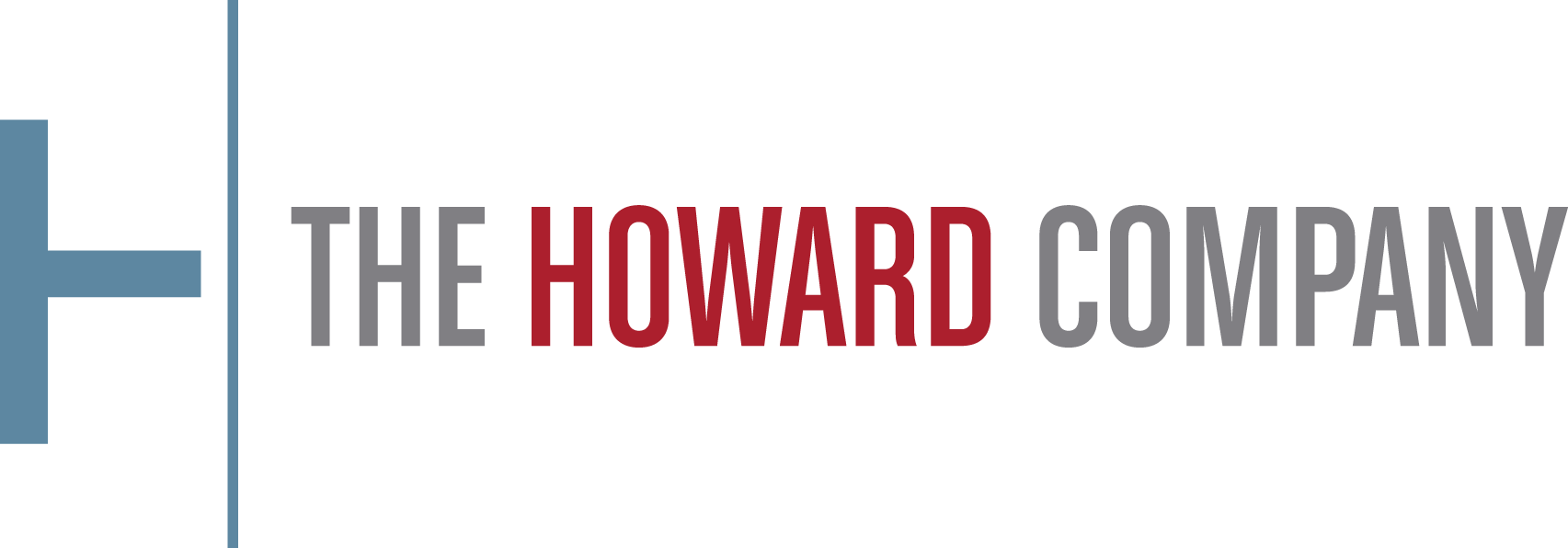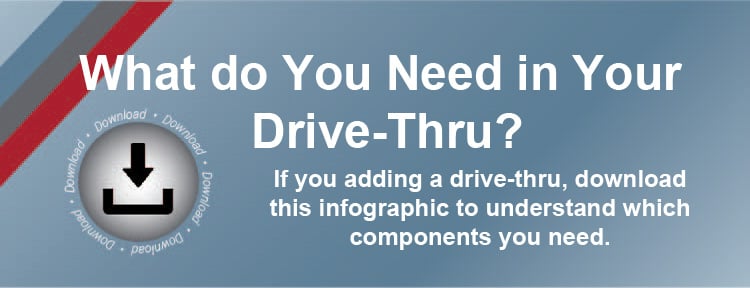 Convenience is in your name, so it is not surprising that you would be thinking about adding the convenience of a drive-thru. The explosion of new ways to deliver convenience to customers is not going to slow down, so the time is right to figure out how you can join in. Before you begin, consider some wisdom we have gained from applying and adapting to convenience store applications through our vast experience in complete drive-thru systems for the restaurant industry.
Convenience is in your name, so it is not surprising that you would be thinking about adding the convenience of a drive-thru. The explosion of new ways to deliver convenience to customers is not going to slow down, so the time is right to figure out how you can join in. Before you begin, consider some wisdom we have gained from applying and adapting to convenience store applications through our vast experience in complete drive-thru systems for the restaurant industry.
Before you Begin, Decide What You Will Offer
Your store probably has hundreds of items for sale, and it would be physically impossible to list all of them on a drive-thru menu board. So, the first job is to decide what you are going to sell at the drive-thru window. Some considerations:
- Do you have a coffee shop or restaurant in the store? If so, it will be natural for guests to expect those items to be available at the drive-thru.
- Do you want to offer other items? If so, will you limit the offering to packaged and snack foods or will you also offer toiletries, household supplies and other non-food or beverage items?
- What are your top selling SKU's? If you decide to sell more than just prepared food, you should start with a list of your top 20 or 30 best-sellers.
Does the Exterior Space Work?
There is a lot of action outside a gas station convenience store. Traffic patterns were potentially a big part of the site planning and cannot be disrupted by the addition of a drive-thru. When studying the feasibility, there are some things to think about:
- Do you have space for a dedicated drive-thru lane or will it overlap the pedestrian walkways and vehicle traffic lanes? Ideally, the drive-thru lane would be tucked out of the way, curling around behind the store in low-traffic areas, but sometimes it is not possible.
- If there is an extensive line backed up in the drive-thru, will it block other non-drive-thru vehicles from getting where they want to go? This could lead to fender-benders or frustrated drivers, so you should consider this in the site planning.
- What measures can you take to ensure the safety of pedestrians who have to traverse the line-up of vehicles?
- Do you have room for a customer waiting area? In order to keep the line moving, you might want to dedicate a few parking stalls as a drive-thru waiting area. If one order is delayed, it can back up the entire drive-thru, irritating those waiting their turn. Having guests pull ahead if their order is going to take a while is a practical solution, but might not always be feasible.
Will You Have to Change The Interior?
The best location for the pick-up window from the point of view of exterior space and traffic patterns may pose challenges due to the interior layout of the building. Ideally, the perfect spot from the outside would line up nicely with a side wall of the café or restaurant. If, however, the perfect spot happens to be in the restroom or where the walk-in cooler is installed, there will be significant remodeling expenses. The drive-thru will add additional revenue, but this expense should be a part of the ROI calculations.
While thinking about the new interior floor plan, your careful analysis of what products you will offer at the drive-thru will be essential. If you plan to offer the ten highest selling non-food SKU's, you should have space near the pick-up window for inventory of those items. It would be extremely inefficient for your team members to have to run across the store to get a bottle of aspirin while they are working on fulfilling the order for a cinnamon roll and large coffee. In addition, leaving it up to the team to pull items off the shelves might lead to miss-picks - giving the customer Advil when they asked for Tylenol, for example, or a liter of Coke when they asked for a 12 oz. Coke. As noted above, it is very important to think carefully about what items you will offer and to keep it as simple as possible.
What Should You Expect from Employees?
You will need to think about how you will staff the drive-thru, and what training you will have to provide. When you add the drive-thru, you additionally add a different kind of customer interaction. People who go through a drive-thru have a different internal clock than those who come into the store. If they get stuck in a slow drive-thru, they can’t abandon the line like they could in the store and their frustration will discourage future visits. What is the standard in your area? If you will be competing with the coffee shop down the street, you should get a good estimate of what their times are. Adding non-prepared food items may impact the timing, especially if the staff must go hunting for items which are inventoried in different locations throughout the store.
Managing a drive-thru does take some training. Learning to use the timing mechanism and the drive-thru headset system is not terribly difficult, but each team member who is assigned to this area should have a handle on how it all works. The urgency to keep the line of cars moving through as quickly as possible can be enhanced by setting timing goals per daypart. Many restaurants incentivize their teams to meet those goals, a model that could work in convenience stores as well.
What Should You Expect from Customers?
When you first put in the drive-thru, expect some customer disruption, especially from regulars. People get annoyed if changes interrupt a comfortable routine. For example, you may have to remove a few parking spots. The regulars who park in those spots every day when they come in for their coffee or cigarettes may be put off. However, this could be an opportunity for you. If those items are now available at the drive-thru, it might be even more convenient for them. Make sure to check local ordinances on whether it is legal to sell packaged alcohol and tobacco products.
Customers will need some time to get used to the idea of using the drive-thru. We have seen that sales numbers often start off lower than expected as it takes the customer a few trips to remember the option is available. They may be a bit reticent about using it because they wonder what items they might be able to pick up there. People don’t like to feel like they are holding up the line, and if they are unsure what they can purchase through the drive-thru, it may take them some time to give it a try. This is where good interior signage is important, even while the drive-thru is under construction. Adding interior signage can make it very easy for the customers who come into your store to understand what they can purchase at the drive-thru. It might be worth giving them a coupon for a discount to be redeemed only at the drive-thru. Most convenience stores report that after a few months, once the customers get used to the idea, the drive-thru sales numbers are in line with or better than they expected.
Businesses are always looking for new revenue, whether by attracting new customers or getting higher sales from existing customers. Adding a drive-thru is likely to do both, but it takes some careful thought. If you are interested in studying the possibility, go no further than the drive-thru experts at The Howard Company. With thousands of drive-thru systems installed nationwide, our team can help you from site planning through menu design and installation.
This post was originally published in September 2018. It has been revised as of February 2023.


